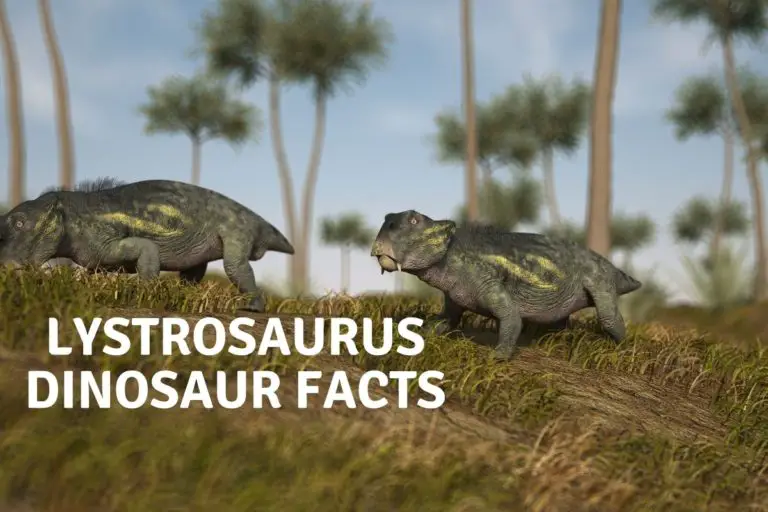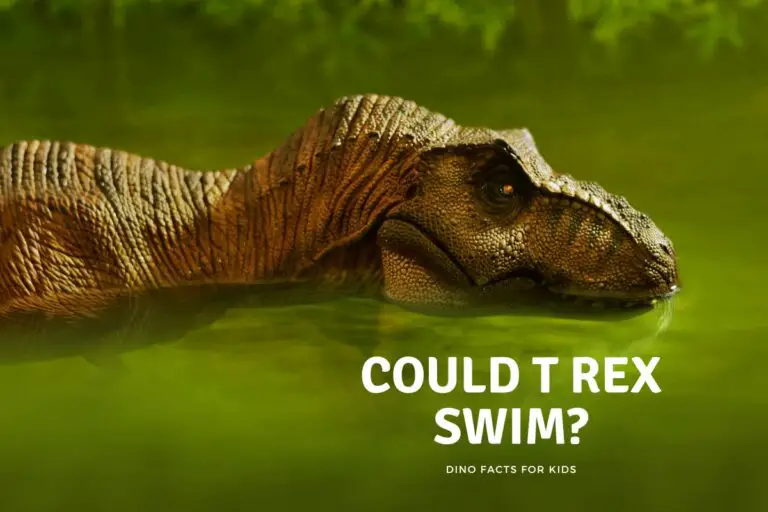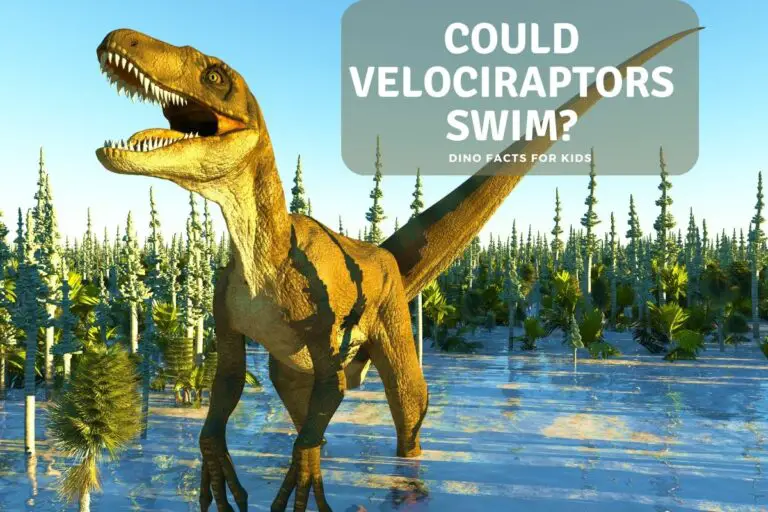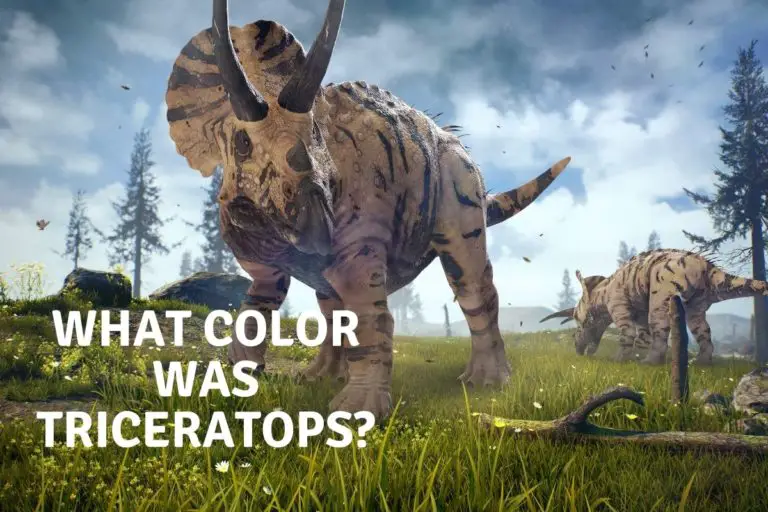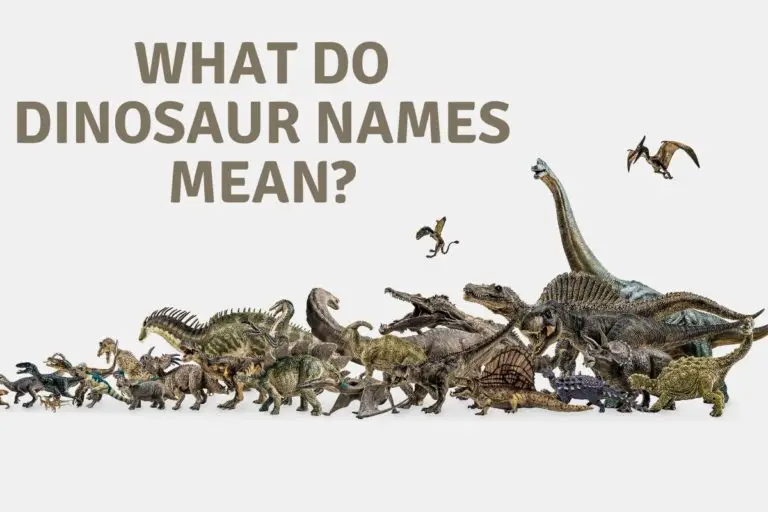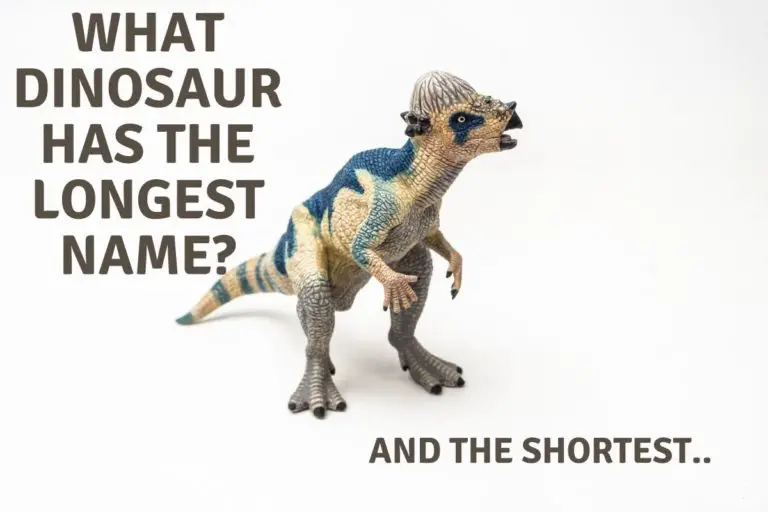Are Lizards Related To Dinosaurs?
Whether your parents bought you dinosaur books as a kid, or pop culture caught you, and you watched a Jurassic Park film, practically everyone knows about dinosaurs. First coined in 1824 by William Buckland, dinosaurs captured our imaginations and scientific minds. Today, after thousands of discoveries, we have a slightly better understanding of these “terrible lizards,” Now, we can answer the question, are lizards dinosaurs?
Lizards are not dinosaurs, although there is a degree of relatedness between the two groups. Lizards evolved down a different evolutionary path. Many scientists now believe that some dinosaurs, the avian dinosaurs, evolved into birds, while those that didn’t, the non-avian dinosaurs, went extinct.
Are you as surprised as we were? Birds are dinosaurs’ closest living relatives (modern dinosaurs) and not lizards. But, if that’s the case, why are dinosaurs called terrible lizards? Why are they portrayed to look the same? Why are lizards not dinosaurs? And what are some of the differences between the two?
We answer those and more questions below.

Why Are Lizards Not Dinosaurs?
Although pop culture, and even the scientific world, at one point believed that dinosaurs were prehistoric lizards, time, further research, and technological developments allowed researchers to rethink their standpoint on the relationship between lizards and dinosaurs.
The fundamental difference between these two groups is that during the Triassic period, dinosaurs and lizards split. Roughly 320 million years ago, amniotes split into the Sauropsids (dinosaurs, other reptiles, and birds) and Synapsids (mammals). By the middle Triassic, dinosaurs and lizards went their separate ways evolutionary.
That is basically a more difficult way of saying that dinosaur and lizards evolved separately into two different groups of animals.
Dinosaurs’ ancestors’ hip joints changed. Dinosaurs’ legs grew perpendicular to their bodies instead of the four-legged posture parallel to the ground, which was prolific until then. As the dinosaur ancestors adopted this new posture, other morphological (shape changes) features changed.
Dinosaur Evolutionary Changes
- They grew taller, longer, more powerful hind legs, with long tails to balance themselves, and they began to move faster and differently from their lizard cousins.
- As dinosaurs continued to evolve, their pelvis developed extra hip bones, and their forearms, now free from scurrying on the ground, could adapt to other behaviors, like catching prey, pulling branches, and eventually, gliding and flight.
- When dinosaurs crossed over to become warm-blooded, scientists are not sure, but it opened up new possibilities for them whenever it occurred.
Lizard Evolutionary changes (or lack of them!)
- During this time, the lizard ancestors continued in their belly crawling ways, using the heat from their environment to fuel their bodies’ needs.
- They stayed cold blooded that means, basking in the sun just like they do today!
- The idea of a dinosaur/lizard split is still relatively new. In the 1970s, scientists discovered that dinosaurs were active, social, warm-blooded creatures ( of a sort, but more on that later) with high metabolisms.
In recent years (2018), scientists discovered that fur and feathers covered many dinosaur species, though not all.
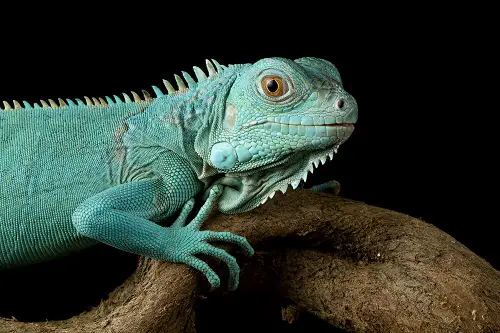
Why Are Dinosaurs Called Terrible Lizards?
When the first “modern” humans discovered dinosaurs in 1824, they believed dinosaurs to be big, scaly monstrous beasts.
The last non-avian dinosaur went extinct roughly 65 million years ago, at the end of the Cretaceous period, and for 200 million years or so before that, dinosaurs were kings of the world. From the Triassic (roughly 252 to 201 million years ago), through the Jurassic (201 to 145 million years ago), and to the Cretaceous period (145 to 66 million years ago).
This “Mesozoic” age saw countless changes to the planet (periods of warming, cooling, increased moisture, and drying), continental shifts, and changes to the species present, which needed to adapt to survive.
To give an idea of the length of time, and the changes the world went through remember that even though we see dinosaurs stomping around together in the movies, some of them were separated by vast times. Stegosaurus for example was almost 100 million years before T-Rex was even born,
And to make it totally clear Humans have been around ( sort of) our current shape for just a million years or so. Basically time changes things, and the dinosaurs did really REALLY well for about 200 million years, where our clock is currently ticking towards climate change after a mere million years.
Any way back to if dinosaurs and lizards are related.
Early dinosaurs were, however, not that unlike lizards in build and design, so when scientists in the 19th century began describing dinosaurs under the grouping (clade) “Dinosauria,” there was no evidence to suggest that they were not “terrible lizards” (what Dinosauria means in Greek).
The three earliest dinosaur discoveries were Megalosaurus (a meat-eating theropod), Cetiosaurus (a sauropodomorph), and Iguanodon (an ornithischian). Richard Owen, in 1842, was the first to coin Dinosauria for these three, which have come to represent the three distinct groups/types of dinosaurs. Not necessarily that accurately but it looks like we are stuck with these descriptions for now.
In these early days, scientists used the evidence and decided that dinosaurs were once terrible lizards. Due to their size and the density of their bones, scientists believed them to be sluggish brutes, driven by instinct, like lizards and crocodiles today.
However, as time progressed, we developed a better understanding of what dinosaurs looked like, how they moved, and what they did, which is how we know that there was a tremendous amount of diversity in 200 million years.
In fact a lot of those early assumptions about Dinosaurs appearance and behaviour have been challenged through out the years. When we assigned them the name of terrible Lizards, we gave them more than the name we suggested dinosaurs were lizards.
We also assumed they would have been:
- Covered in Scales
- Slow moving
- Cold blooded
- Not intelligent.
Just from the short list above, and a 5 minute look through out other articles, you can see how far from the truth those early assumptions were. However, the wonderful thing about science is that we can change our knowledge as we learn more!

Why Do Dinosaurs and Lizards Look The Same?
Although lizards are not direct descendants of dinosaurs, both belong to the class Reptilia (reptiles). For this reason, dinosaurs and reptiles share similar features.
So we can allow some sympathy for those first ever paleontologists who sat looking at these huge bones and someone asked ” So what are we going to call these?!”
Some similarities between dinosaurs and lizards.
- Some dinosaurs had spines, horns, crests, and other protrusions, which many lizards share.
- Dinosaurs laid eggs, like most reptiles and birds.
- Four limbs (although many dinosaurs walked on the two hind legs).
- Vertebrates (they all had backbones).
- Dermal structures like plates and body “armor.”
- Common presence of tails
- Scales covering the skin.
However, the truth is that the only evidence we have of dinosaurs is what we find as fossils and a great degree of artistic interpretation.
The most significant factor is that the media (books, films, and even scientific, artistic drawings) portrayed dinosaurs as big lizards. This portrayal captivates our minds as children and adults, which is difficult to move away from.
In recent years, scientists concluded that dinosaurs were probably not the scaly beasts we believed them to be, but rather that many of them had feathers or fur coverings. At first this was thought to be the later dinosaurs that lived towards the extinction, but evidence of feathers have been found over 100 million years old.
Our understanding of what dinosaurs looked like may change again as more evidence comes to light in the next few years.
What Are The Differences Between Dinosaurs And Lizards?
Although they belong to the class Reptilia, dinosaurs and lizards have some fundamental differences. Including:
Differences In Appearances
- Lizards are covered in scales and occasionally spines. The majority of lizards spend their lives on all fours, with legs attached to the side of their bodies.
- On the other hand, Dinosaurs had limbs underneath their bodies, and many had fur, feathers, spines, horns, and crests.
Differences In Physiology
- Lizards are cold-blooded animals (exotherms) whose body temperature is dependent on the environmental temperature.
- Although once believed to be cold-blooded, dinosaurs may have been warm-blooded (at some point, the transition would have occurred). This warm-bloodedness would mean that dinosaurs would have kept constant body temperatures and higher activity levels. or Mesothermic. Now we said we would address this word so see just below this section.
- Lizards crawl on their four legs. These legs are to the sides of their bodies, and their thigh bones are parallel to the ground. This posture causes lizards to move in a sideways motion.
- On the other hand, Dinosaurs had legs underneath them, with well-defined hip joints allowing them to move in a forward motion and at greater speeds.
Differences In Behavior
- Scientists discovered that many species of dinosaurs were gregarious, social, and practiced material care.
- On the flip side, Lizards are usually solitary and have little to no maternal care.
- Dinosaurs were terrestrial dwellers, (if we ignore spinosaurus for a moment) while some lizards inhabit many marine, terrestrial, and arboreal environments.
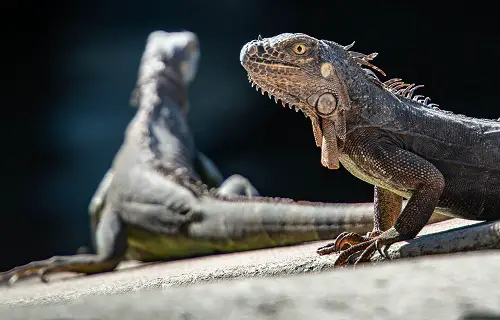
What Did Lizards Come From?
One of the earliest lizards’ earliest ancestors is Megachirella wachtleri, which was discovered in Italy in 2003. Scientists believe that this lizard walked the earth 240 million years ago, more or less when the first dinosaur ancestors arrived.
When dinosaurs and lizards went their separate ways in the Triassic period, early turtle ancestors were the first to develop (roughly 250 million years ago). The crocodilians were to follow in emerging roughly 220 million years ago. Tuataras were not long after that (maybe even before). These lizards still exist today by the way in New Zealand!
Snakes and lizards (Squamata) diverged roughly 150 million years ago, just in time for the mass extinction 65 million years ago. Just for reference though, titanoboa did not live with dinosaurs, it was thought to be about 5 million years after the extinction at least

Why Did Dinosaurs Change Into Birds and Lizards Stayed The Same?
Dinosaurs, birds, pterosaurs, and crocodiles belong to the archosaurs clade, a large umbrella grouping of similar species that share a common ancestor and features.
Extinction is a prominent driving force of evolution. Those species best adapted to survive a sudden and drastic change in the environment are the ones that inherit the new world.
During the Triassic period, crocodile archosaurs (ancestors) were the most dominant and diverse species. Still, at the end-of-the-age extinction, dinosaurs were the ones to come out on top, dominating the Jurassic period and Cretaceous times.
However, between the Jurassic and Cretaceous (165 – 150 million years ago), birds evolved from theropods, meat-eating dinosaurs that walked on two hind legs with clawed, three-toed feet.
These birds began to adapt to their environments and used resources and areas other dinosaurs could not. By the time the extinction event came, birds were poised to take over from their brethren.
Not all dinosaurs were birds, but all birds are dinosaurs, which is why other dinosaurs went extinct (non-avian dinosaurs).
Believe it or not, Lizards underwent similar evolutionary changes since their humble beginnings.
The reason why lizards remained and Tyrannosaurus rex didn’t are because lizards adapted to their environments. Some species learned to glide; others developed bacteria that would render prey helpless. Lizards adapted to living in trees, the desert, the ocean (marine iguanas), and many other habitats, using an array of food sources, allowing them to compete for survival.
There initial survival of the 66 million year ago extinction event would have been down to a number of factors, however it is widely accepted that the bigger you were the less chance of surviving you had during the aftermath of the asteroid impact.
Lizards, alsong with far distance relative of mammals did not get large back then, the dinosaurs had that niche carved out for 200 million years. Lizards also had not evolved warm blood, or even a half way house between warmblood and cold blood. They had cold blood, cold blood needs less food, when there is MUCH less food being small and not hungry solves a lot of problems.
Although we cannot see it, lizards today are a product of millions of years of natural selection and environmental pressures, creating well-adapted, diverse reptiles. So while they may look almost identical to millions of years ago they are very different to both the lizards back then, and the dinosaurs that lived with them even if they are related on a far distance family tree.
If you want to learn more about dinosaurs, or grab coloring pages or fact sheets to collect you can check out all our dinosaur related resources and articles on the big button below!
We have a few in a series of articles about other animals that may or may not be related to dinosaurs on the site, some are listed below. Feel free to take a look.
- Are Chickens dinosaurs?
- Are Alligators dinosaurs
- Are Sharks related to dinosaurs
- Are Turtles related to dinosaurs
- Are crocodiles related to dinosaurs
- Is a rhinoceros a Dinosaur?
- Megalania The biggest ever lizard
Conclusion
Although pop culture and the media have ingrained in us the image that dinosaurs are big, lumbering lizards, this is no longer believed to be true.
Scientists agree that dinosaurs were not lizards. They were warm-blooded, covered in fur and feathers, and eventually evolved into birds. During this time, lizards were perfecting their adaptations to the environments they inhabited, evolving along a distinct path of their own to resemble what we know today.
And during an extinction level event like the K-T Asteroid impact not being 40 ft long and 20,000 lbs and needing a lot of food like your bigger relations, was a distinct evolutionary advantage!
References
https://www.livescience.com/3945-history-dinosaurs.html
https://www.science.org/content/article/reptile-ancestor-all-world-s-snakes-and-lizards
https://scienceline.ucsb.edu/getkey.php?key=1796
https://www.britannica.com/animal/reptile/Evolution-and-paleontology
https://www.britannica.com/science/Triassic-Period
Hi, I am Roy Ford a General Studies and English Teacher who has taught all over the world. What started as a fossil collection became a great way to teach, motivate and inspire students of all ages and all over the world about dinosaurs and from that and children’s love of dinosaurs came the site dinosaur facts for kids, a resource for all ages.

